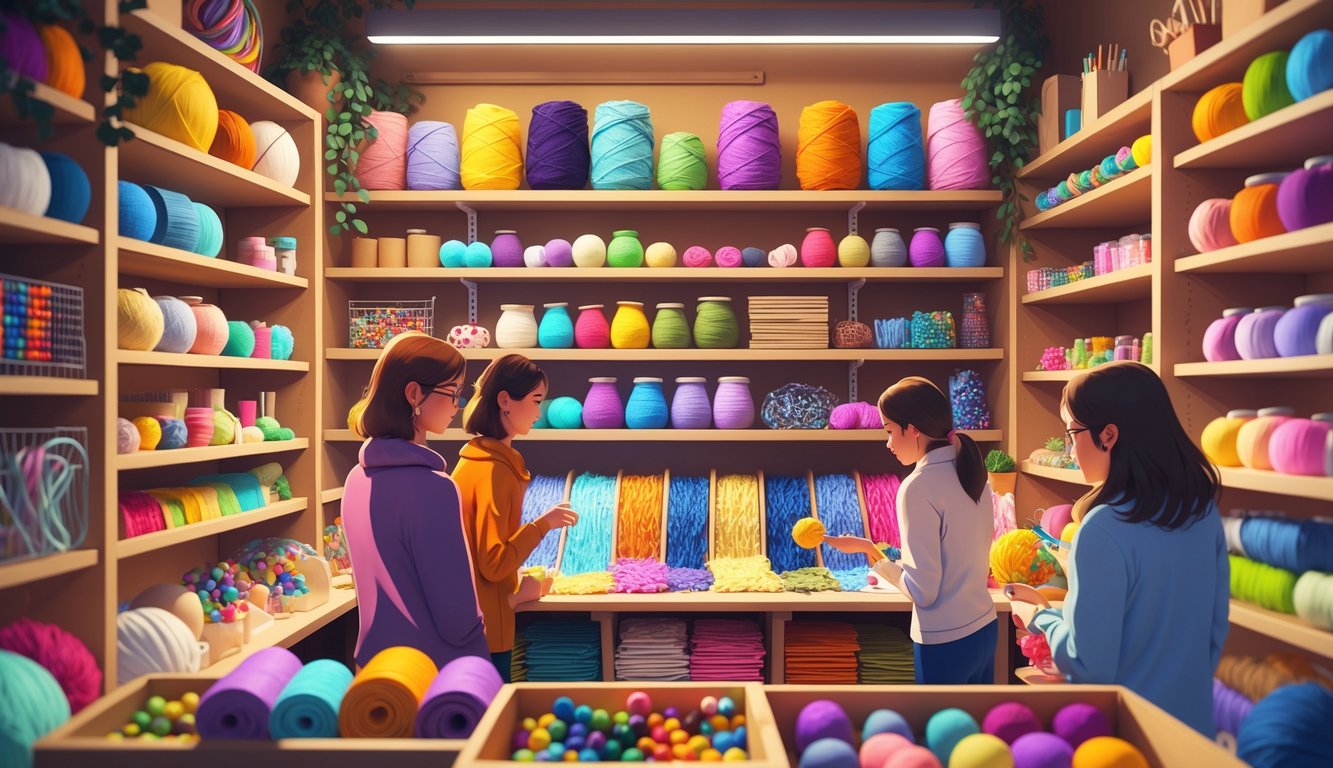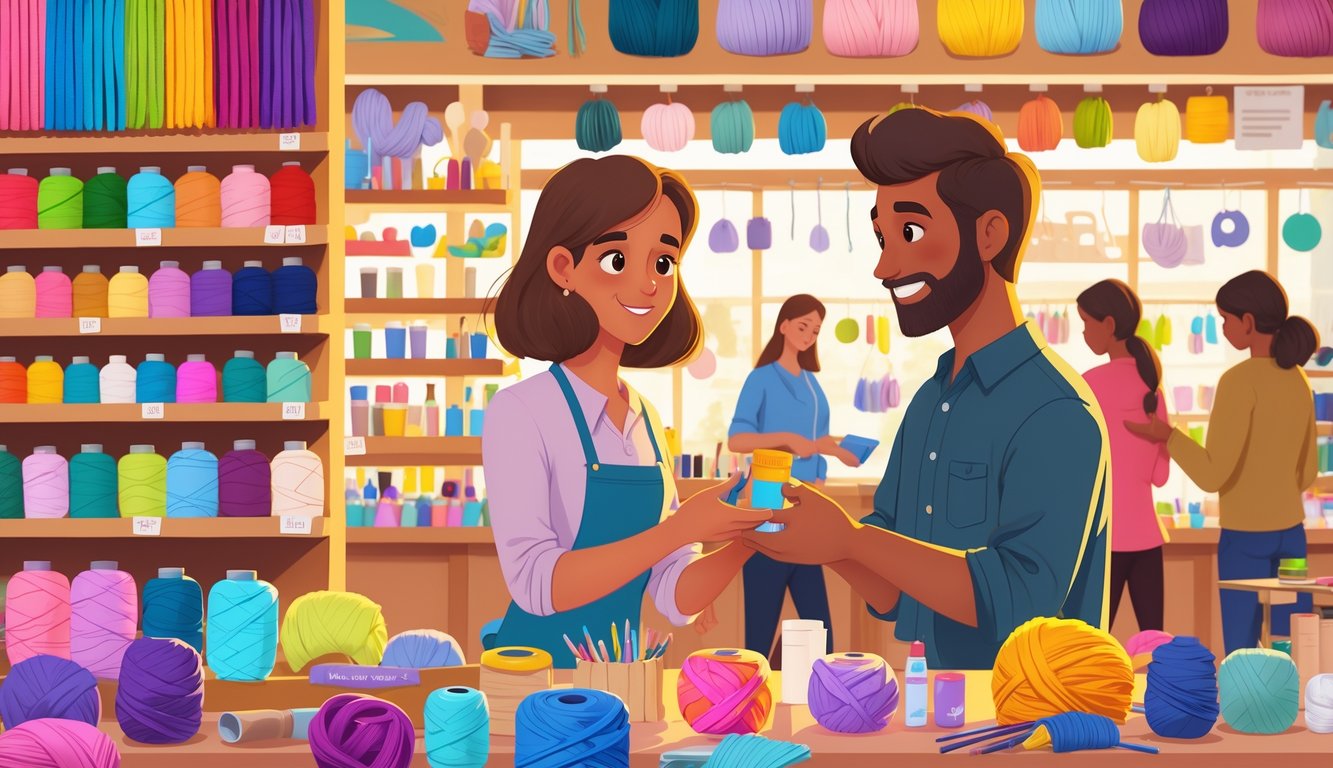
You ever watch someone at a craft store, arms loaded with supplies like the apocalypse is coming, and just think, “Why?” Because, seriously, you could just show up at a local swap, dump that unopened diamond painting kit, and walk away with a pile of acrylics—zero dollars spent, no guilt, just a weird sense of victory. “Material swaps are the sneakiest budget hack in DIY—retailers are basically betting you’ll never figure out you don’t have to pay full markup if you just, y’know, trade with another human.” It’s almost like there’s this unspoken rule, like how your friend tells you Michaels takes coupons from everywhere but kinda forgets to mention the community swap that would solve your actual problem.
I’ve stood at swap tables where people nearly arm-wrestle over unopened embroidery floss. Every single time, I wonder—do big box stores even want us talking about these swaps? I mean, guides (HubPages, 2024) swear you’ll save real money and clear out clutter, but none of them mention the time I left with a baggie of rare washi tape and some calligraphy pens I still don’t know how to refill. And online swaps? I’m still waiting for a box of vintage buttons from Ohio. Maybe they’re lost, maybe they never existed, who knows.
Not everyone’s got the energy to drive across town (especially when the car smells like old coffee and the oven’s busted again), but have you seen how happy crafters get when they swap something random—like a cross-stitch kit—for the thing they’ve needed for weeks? If retail margins on basics are hovering at 50% (NAICS, 2023), someone’s making bank every time we ignore swaps. And, honestly, if you don’t leave with at least one weird supply you swear you never picked up—a stray pompom, a single googly eye—did you even go?
What Are Material Swaps in the Crafting World?

Ever tried cleaning your craft room and ended up with five bags of fabric scraps, none of which you remember buying? That’s basically the origin story of every craft swap. Sometimes the weirdest leftovers spark the best projects. Swapping isn’t just about trading “stuff”—it’s about trading those little bursts of inspiration from one clutter pile to another.
Defining Craft Supply Swaps
You know that box of bead strands or stack of clearance paper from 2021? Yeah, you’re dragging that to a swap eventually. It’s like a kitchen gadget swap, but you’re drowning in yarn. Technically, a craft supply swap just means getting together—online or in some church basement with bad lighting—and mixing up the stuff you’re not using. REUSE Network said in 2023 that 42% of U.S. crafters have swapped at least once, but honestly, it feels like everyone’s done it. It’s not just finished projects either—people swap half-used sticker sheets, specialty glues, rulers shaped like, I don’t know, giraffes? Swaps are weirdly exciting.
Sometimes there’s a “mystery materials” table. You know, a bin of unlabeled, random junk. Everybody grabs something totally useless, just for the chaos.
Popular Types of Craft Supply Exchanges
Fabric scrap swaps? Thread spools? That’s where the real drama happens. Quilters and seamstresses will literally whisper about rare prints like they’re trading secrets. Community swaps sometimes set rules: bring five things, take five, nothing broken, please. I once watched a three-jar button trade for a single fat quarter. No shade; I’d have done it, too.
Online swaps? Shipping is a nightmare, but the themes are hilarious. Tiny pom-poms only? Sure. Whole boxes based on trends? Why not. Blind trades where you have no clue what’s coming—imagine opening a box of 80 mini glue bottles and not a single brush. There’s no logic, which is why it works. Sometimes people swap skills—resin tutorials for jewelry findings. It’s like a barter economy run by people with too much glitter. And someone always sneaks in extra glitter. Polymer clay, fancy scissors, nothing’s safe—except that ancient hot glue gun, which nobody wants but somehow always comes back.
Why Retailers Depend on Traditional Craft Supply Sales

Ever actually looked at the markup on glue guns or those tiny embroidery floss packs? It’s hilarious. Michaels or Joann needs you to pay $7.99 for those 50-cent beads, and everyone just shrugs and does it. Retailers are basically building a house of cards on these tiny markups, stacked so high it’s a miracle the whole thing doesn’t fall over every week.
The Business of Selling Craft Supplies
Trying to figure out how these chains move supplies, you always end up back at shelf turnover. Stores shove brands in your face—DMC, Sizzix, Prismacolor, and those weird “value packs” that never actually save you money. It’s less about options and more about controlling what you see—and what you don’t even know you’re missing.
Margins? Wild. Mod Podge sometimes sells for double what the store paid, and I’ve heard acrylic paint sets can hit 70% margin on a good day. Nobody’s thinking about it, but those steady sales of felt sheets, bulk yarn, mason jars, that’s what keeps the lights on. Suddenly, there’s half an aisle of “curated” starter kits, just to trap newbies before they figure out how to comparison shop.
Executives love talking about “inspiration,” but really, it’s just inventory management. Especially now that 90% of shoppers whip out their phones to scan barcodes (Quizlet retail flashcards, seriously?) or check Amazon and Etsy for a better price. That’s not convenience; that’s just everyone trying to not get ripped off.
Impact on Retailer Revenue
One time, during a training, a manager said, “You sell sequins, you pay rent.” I wish that was a joke. Retail floors run on hundreds of tiny, high-turnover items nobody thinks about. If crafters switch to direct-buy on Etsy or figure out how to get discount supplies, the whole setup starts wobbling.
When supply chain nonsense hits (see that blog post about craft industry delays), it’s the basic sales—popsicle sticks, resin molds—that keep stores alive, not the $400 die-cut machines. Retailers’ revenue isn’t from big spenders; it’s from baskets full of $10-or-less stuff. My receipts prove it—glue dots, blank cards, all the boring stuff that’s secretly vital.
Check the quarterly reports: break-even is pinned to these tiny sales. Cut them out, or if people get smart and find direct sources, all those seasonal displays won’t pay the bills. No tidy ending here—it’s just a scramble, and if habits shift even a little, retailers can’t keep up, no matter how many “exclusive” Cricut bundles they throw at you.



